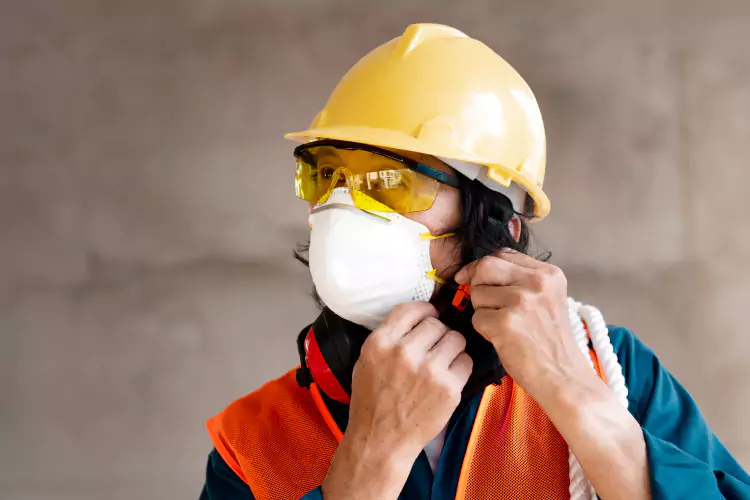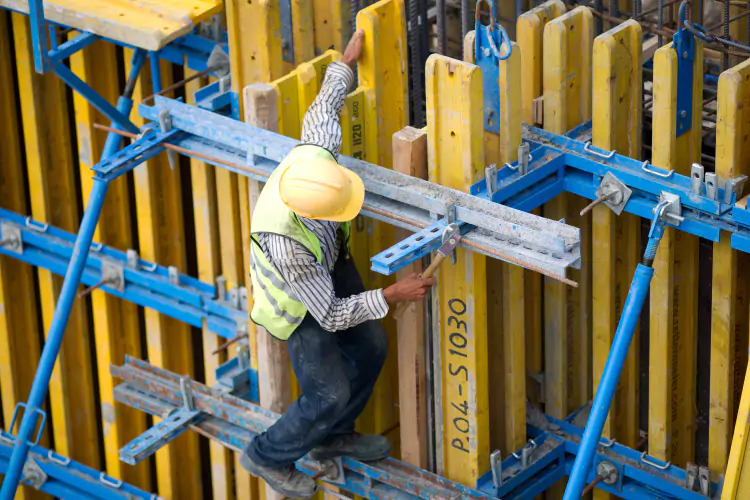Construction sites are dynamic places in which productivity and efficiency are critical to project success. However, these sites also pose a number of risks and hazards, particularly when using heavy machinery and equipment. Safety must always be a top priority in order to protect workers, avoid accidents, and maintain a safe working environment.
In this blog post, we will look at the critical topic of safety precautions when operating construction equipment. We’ll look at training recommendations, safety gear requirements, accident prevention advice, and equipment-specific guidelines to help construction professionals negotiate these issues safely and successfully.
Understanding and following adequate safety measures allows construction organizations to not only improve workplace safety but also increase productivity, reduce downtime due to accidents, and protect their employees’ well-being. Let’s look at the essential factors of construction equipment safety to create a safe and successful work environment.
Safety practices when using construction equipment

Certified Training Programs
Encourage equipment operators to participate in certified training programs provided by reputable organizations such as the National Commission for Crane Operator Certification (NCCCO), the National Center for Construction Education and Research (NCCER), or the Occupational Safety and Health Administration.
Equipment-Specific Training
Stress the need of equipment-specific training to ensure that operators understand the proper operation, maintenance, and safety protocols for each type of construction equipment they operate. Excavators, bulldozers, cranes, forklifts, aerial lifts, and other equipment are all included.
Hands-On Training
We recommend hands-on training sessions in which operators can practice utilizing equipment under the supervision of experienced instructors. Practical experience improves understanding and ability in using machines safely.
On-Site Safety Demonstrations
Encourage construction businesses to hold on-site safety demonstrations and drills to model real-world scenarios, test emergency response systems, and ensure that workers are ready to handle unforeseen events safely.
Supervisor teaching
Emphasize the need of teaching supervisors and managers on how to oversee equipment operations, perform safety inspections, resolve safety concerns, and promote a safe culture inside the firm.
Here are some safety gear requirements :

Hard helmets
All construction workers, including machine operators, should wear hard helmets to protect their heads from falling objects, debris, and possible collisions.
Safety Goggles
Eye protection is essential for avoiding injuries from flying particles, dust, chemicals, and other hazards. Safety goggles with side shields offer total eye protection.
Respiratory Protection
To avoid inhalation dangers in workplaces with dust, fumes, or airborne contaminants, personnel should wear adequate respiratory protection such as masks or respirators.
Fall Protection Harnesses
When working at heights or on raised platforms, workers should wear fall protection harnesses and lanyards to avoid falls and catastrophic injuries.
Fire-Resistant Clothing
In situations where there is a risk of exposure to fire or heat, workers should wear fire-resistant clothing to minimize burn injuries.
Here are some accidental prevention tips :
Regular Equipment Inspections
Inspect construction equipment on a regular basis to identify and address potential mechanical issues or safety hazards. This includes inspecting for worn-out components, leaks, defective brakes, and electrical issues.
Pre-Operation Checks
Before utilizing any equipment, operators should conduct pre-operation checks to ensure that all safety measures are operational, fluid levels are appropriate, and the equipment is in good working order.
Proper Training
Ensure that all equipment operators are properly trained in the safe operation of the specific equipment they will be utilizing. Training should cover proper starter and shutdown procedures, safe operating speeds, load capacities, and emergency protocols.
Clear Communication
Create clear communication procedures for employees, supervisors, and equipment operators to avoid accidents caused by misinterpretation or misconceptions. Use hand signals, radios, or other forms of communication as needed.
Safe Operating Procedures
Follow the manufacturer’s instructions and recommended safe operating procedures for each piece of equipment. Avoid using equipment in hazardous situations, such as bad weather or on unsteady surfaces.
Prioritizing Safety for Success
In the fast-paced and demanding business of construction, safety is more than simply a legislative obligation; it is a critical component of success. Companies that prioritize safety standards when utilizing construction equipment may protect their most important assets—their employees—while also ensuring that projects run smoothly and efficiently.
Construction personnel can reduce risks, prevent accidents, and create a safer working environment by participating in accredited training programs, following equipment-specific requirements, and wearing appropriate safety gear. Regular equipment inspections, clear communication, and adherence to safe operating procedures all help to reduce accidents and improve overall workplace safety.
Companies must invest in training, offer necessary safety equipment, and promote a safety culture in which each individual is responsible for their own
and others’ safety. By doing so, construction companies not only comply with requirements, but also increase productivity, reduce downtime due to accidents, and boost their reputation as a safety-conscious organization.
As we continue our review of construction safety practices, keep in mind that everyone is responsible for safety, from machine operators to supervisors and management. Let us continue to prioritize safety, adhere to best practices, and strive for excellence in developing safe and successful building environments.
Stay safe, stay educated, and work together to create a better, safer future

